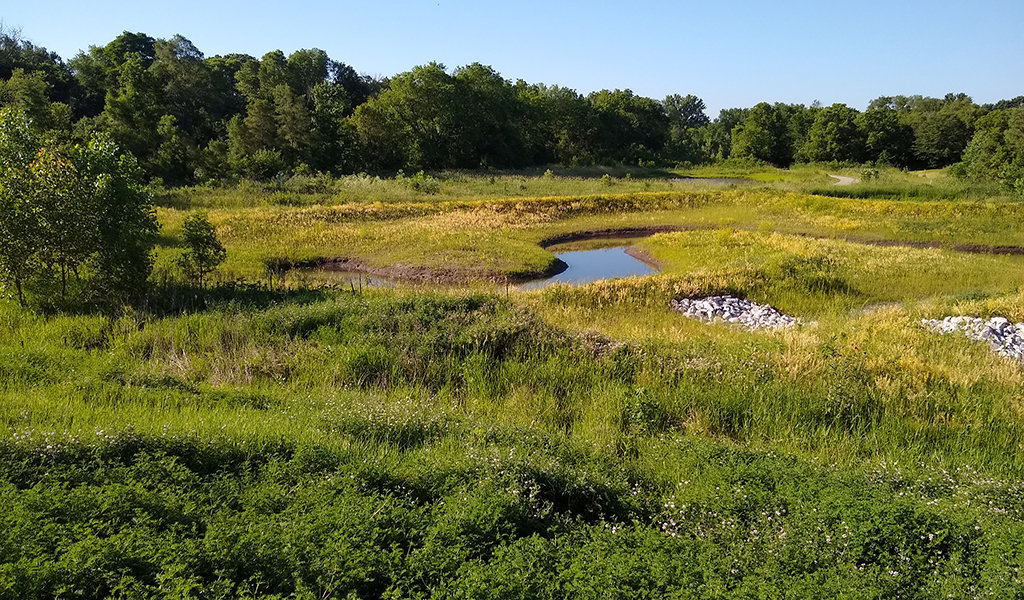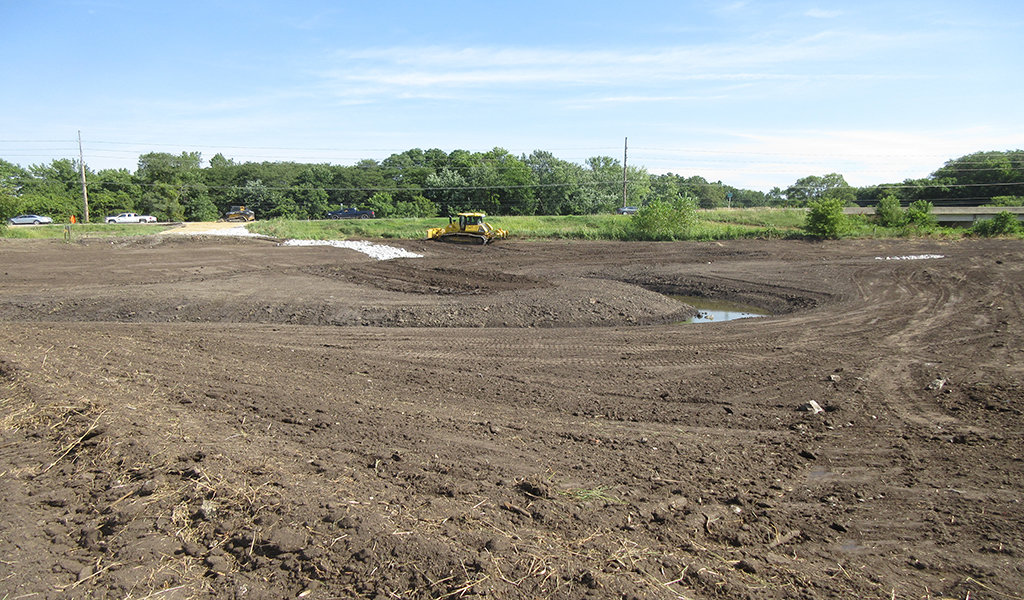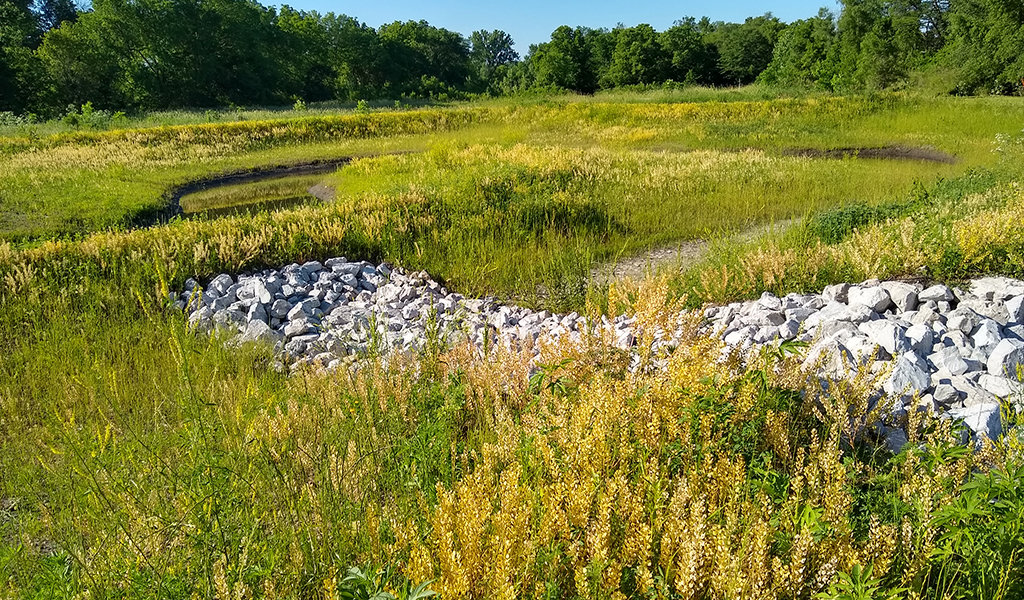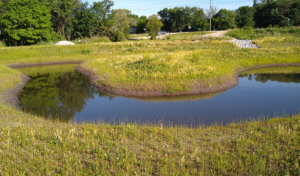
Stormwater Wetland System as Treatment Option
Across the country, effective stormwater management is vital for building urban resiliency and meeting stringent water quality standards. To fulfill this objective, ongoing management efforts often focus on holding water in the upland areas of a watershed through tried and true practices such as regional detention basins and wetlands. Although these practices have been used in stormwater management for decades, their design was originally driven as a simple manner of conveyance.
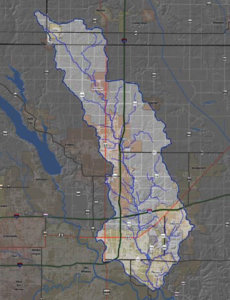
Fourmile Creek Watershed encompasses approximately 76.642 acres, covering 120 square miles primarily in Polk County.
Today, stormwater wetland systems are being created as multi-functional infrastructure components that help regulate flooding, improve water quality, heighten biodiversity, and produce natural amenities for communities. These manmade systems are primarily designed for the purpose of treating stormwater runoff by combining the functions of natural wetlands with the added capacity for temporary water storage.
Polk County Conservation followed this trend with their decision to build a stormwater wetland and sediment basin forebay to treat runoff from 25-acres of mixed residential, commercial, and agricultural land. Previously, this land area directly drained into the environmentally sensitive Fourmile Creek. The Snyder & Associates team was brought on board to provide their expert environmental and stormwater design services.
Proper Planning and Design Impacts Stormwater Improvements
The Lower Fourmile Creek area is currently being developed into a greenway and hosts a regional bike trail with plans to feature restored woodlands and pocket parks alongside the stormwater wetland. Without precise construction planning, equipment, sequencing, and techniques, however, even a properly designed project is likely to fall short of providing maximum benefits.
To ensure it would function as intended, our team ran detailed hydrologic and hydraulic modeling to accurately size the wetland. This process confirmed it would effectively treat runoff from small, frequent storm events while having the capability to pass large storms without causing damage to the wetland or the adjacent trail. Though the site had extreme parameter limitations, our design team achieved a successful stormwater wetland design through persistence and detailed planning.
As designed, the project diverts stormwater from an adjacent roadway into a forebay basin pool with channel meanders added between them to increase the travel length and provide an extended contact period. This allows the wetland system time to serve its purpose of slowing flows and reducing contaminants. Once detained, the stormwater enters a mixture of marsh, shallow-water, and deep-water areas that enhance nutrient removal and provide aquatic habitat for various species.
Fourmile Creek Stormwater Wetland Qualifies for IDALS Grant
To be approved, designs must match established requirements and meet stakeholder’s criteria while still remaining within the given budget. Funding is often a major roadblock to the implementation of innovative and efficient stormwater infrastructure around the country. Our team worked hard to match this water resources project with available funding sources.
Traditional public funding and financing methods for stormwater infrastructure provide limited options to address current problems. At the same time, views on stormwater are changing, with increased recognition of urban flooding and the need for infrastructure to properly manage runoff. Prompted by the 2008 Gulf Hypoxia Action Plan, Iowa took proactive steps to protect and improve its water quality by creating an additional funding source called The Iowa Water Quality Initiative. This initiative aims to fund water quality projects that can serve as examples and best practices for cities and individuals.
As one of the multiple cities awarded a portion of the state grant, Des Moines allocated a percentage of the funds toward the Fourmile Stormwater Wetland project. With this additional funding, the city and the Iowa Department of Agriculture and Land Stewardship (IDALS) split project costs, making the overall cost more feasible.
Stormwater Wetland Adds to Larger Fourmile Projects
This project comes as an addition in support of the comprehensive Fourmile Watershed Management Plan. The initiative helps outline a series of watershed goals to reduce flooding and improve water quality across the watershed’s 76,600 acres. As this project continues to evolve, new practices are added and retrofitted, helping to enhance water quality across the State of Iowa.
Our goal is always to deliver a project that makes a positive impact — now and for future generations. After monitoring this stormwater wetland system since completion and recording results indicating an overall improvement in water quality, we’re proud to say that for this project, that goal was completed.
